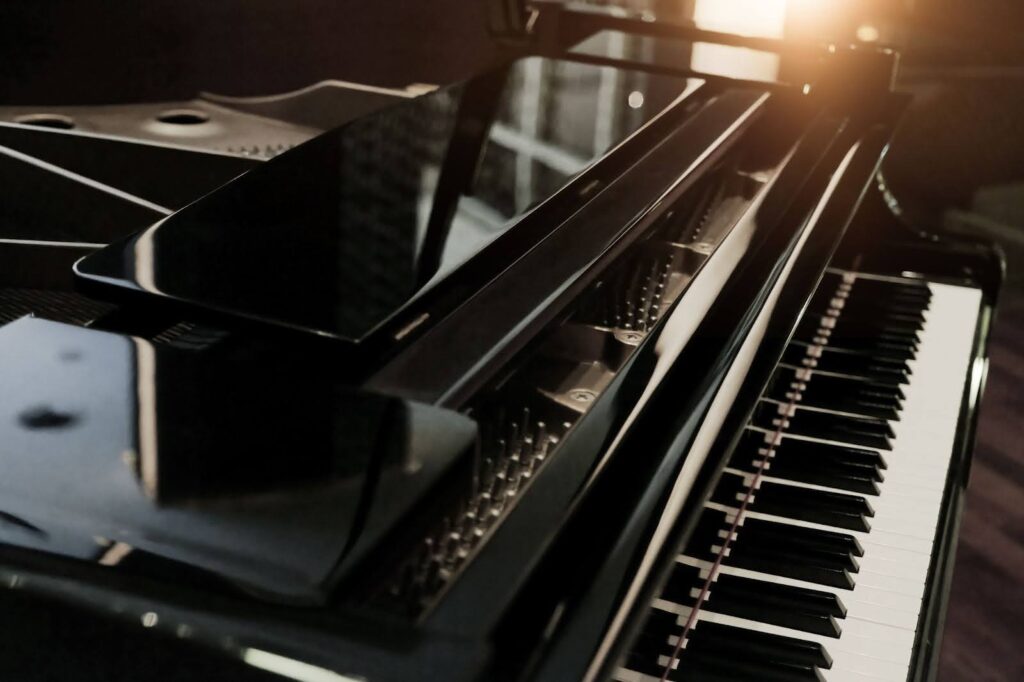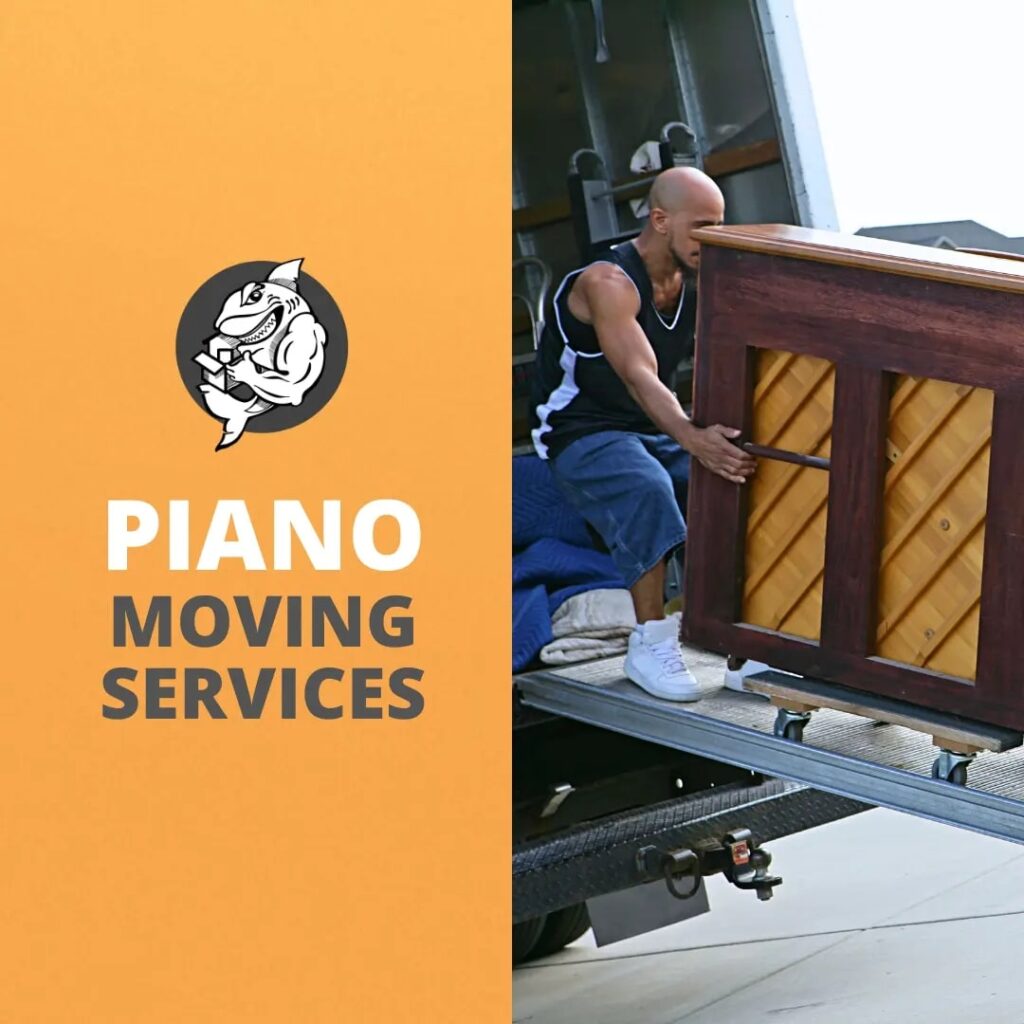When you have to move to another place, carrying the piano down the stairs is one of the most difficult tasks you may face. The massive weight and size of this musical instrument make it a significant challenge, not to mention the risk of damaging its fragile elements or causing injury to those involved in the move.
For this reason, you need to prepare well to make this process as smooth as possible and reduce the risks to the absolute minimum. So, how to move a piano down the stairs safely and efficiently? Read on to find out!

General Preparations for Moving a Piano
No matter what piano you are dealing with, there are certain preparations that should always be made to facilitate this task and make it safer. Some of the most important ones include:
Asking for Help
Moving a piano definitely requires more than one person. You should gather a group of three or four more people to carry this heavy instrument and one person who will guide the whole process.
Take the Necessary Measurements
You need to measure:
- The piano
- The piano skid board (if applicable)
- All the doorways, hallways, and staircases on the way
- The van or truck that will transport the piano
- The new space for the piano at your destination
Clear the Way
Last but not least, plan the path and eliminate all the obstacles that can make it difficult or even impossible to move the piano down the stairs. Move furniture in the way, open or even remove the doors, hide breakable objects, and keep children and pets away from the area.
Collect the Necessary Materials and Supplies
For all types of pianos:
- Protective gloves
- Measuring tape
- Moving blankets or padding
- Heavy-duty lifting straps
- Tie-down straps
- Packing tape or bungee cords
- Metal ramp (if possible)
For an upright piano:
- Moving dolly or hand trucks
For a grand piano:
- Screwdriver
- Piano board
Moving a Piano Down the Stairs
The process of moving the piano down the stairs may differ depending on the type of instrument you’re dealing with. Take a look at our step-by-step guides:
Moving an Upright Piano Down the Stairs

Step 1: Prepare the Piano
Before you begin moving the piano, you should properly prepare it to reduce the risk of damage.
- Securing the Keyboard Lid: Close and lock the keyboard lid to protect the keys. If it doesn’t lock, secure it with tape or a strap.
- Wrapping the Piano in Moving Blankets: Carefully wrap the entire piano with thick moving blankets or other padding to protect its finish from scratches and dents. Secure the blankets with heavy-duty moving straps or tape to ensure they stay in place during the move.
Step 2: Lift and Secure the Piano
- Proper Lifting Techniques: Have the movers bend at the knees and lift with their legs, not their backs, to avoid injury. Lift the piano slightly off the ground and position it onto a moving dolly or skid board.
- Securing the Piano: When the piano is on the dolly or skid board, use heavy-duty straps to secure it in place. This will help keep control and balance during the move.
Step 3: Move Down the Stairs
- Slow, Coordinated Movements: Start carrying the piano down slowly, making sure it remains balanced at all times. The movers at the bottom of the stairs will take most of the weight, while those at the top guide and control the speed of the process.
- Step-by-Step Movement: Move one step at a time, ensuring everyone is in sync. Constant communication is crucial to prevent any sudden shifts or loss of control.
- Keeping the Balance: Try to avoid tipping the piano. If it starts to lean, stop for a while and readjust before continuing.
Step 4: Handle Difficult Spots
- Navigating Tight Corners: If you encounter a tight corner, be very careful. You may need to tilt the piano slightly to maneuver around the bend safely.
- Resting and Readjusting: If the staircase is particularly long, remember to take the necessary breaks to rest and readjust.
Step 5: Reach the Bottom Safely
- Final Descent: Continue the slow, controlled movement until you reach the bottom of the stairs. Make sure the piano is fully on flat ground before releasing your grip.
- Loading the Truck: Transfer the piano from the dolly or skid board to the truck. Always keep one person on each side of the instrument. Secure the piano to the back wall of the vehicle with ratchet straps.
- Inspecting for Damage: After the move, inspect the piano and the surrounding area for any signs of damage. Check the instrument’s functionality to ensure everything is in working order.
Moving a Grand (or Baby Grand) Piano Down the Stairs

Step 1: Prepare the Piano
- Removing the Lyre (Pedal Assembly): Use proper tools to unscrew and detach the lyre from the piano, then set it aside in a safe place.
- Removing the Legs: Start with the left leg while two people hold the piano upright. After removing the left leg, gently lower the piano onto its side, typically onto a padded piano board or skid board. Remove the other two legs carefully.
- Wrapping the Piano Body: Once the legs are removed, wrap the entire body of the piano in moving blankets, securing them with heavy-duty straps. Ensure the blankets cover all sides to protect the finish and fragile elements.
Step 2: Secure the Piano on a Piano Board
- Positioning the Piano on the Board: With the piano on its side, position it carefully onto the padded piano board. Ensure the piano is centered and stable on the board.
- Securing the Piano with Straps: Use heavy-duty moving straps to secure the piano to the board. They should be tight enough to prevent any movement but not too tight to avoid damaging the piano’s finish.
Step 3: Lift and Position the Piano
- Lifting Techniques: Use proper lifting techniques—bend at the knees and lift with your legs, not your back. Lift the piano board with the instrument securely strapped to it and position it at the top of the stairs.
- Positioning for Descent: Once at the stairs, position the movers strategically. Those at the bottom will take on the majority of the weight, while those at the top will focus on controlling the speed and guiding the piano down the stairs.
Step 4: Move the Piano Down the Stairs
- Slow and Steady Movements: Start going down with the piano slowly, step by step. The movers at the bottom should descend first, gradually lowering the piano board as they go. The movers at the top should guide the piano, ensuring it doesn’t tip or move too quickly.
- Maintaining Balance and Control: Throughout the descent, keeping balance is crucial. Ensure the piano remains straight, and the weight is evenly distributed among the movers.
- Passing Through Tight Spaces: If the staircase has tight corners or narrow spaces, be extremely careful. You may need to tilt the piano slightly or reposition the movers to pass through these areas. Move slowly, and communicate constantly to avoid sudden movements.
Step 5: Complete the Descent and Reassemble the Piano
- Final Descent: Continue descending slowly until the piano board is entirely on flat ground.
- Loading the Piano on the Truck: Carefully load the piano on the truck and use straps and other measures to secure it.
Positioning the Piano: Move the piano to its new location using the piano board or a dolly, then remove the blankets and straps and reattach the legs and lyre. Make sure the piano is placed on a level surface.

The Final Note
As you can see, moving a piano down the stairs is quite a challenging and exhausting task. To avoid all the fuss and risks associated with this process, call our experienced piano movers and order a professional service.
We will find the most convenient date to carry out the service and treat your piano with utmost care. Thanks to the dedicated tools and materials we use, your instrument will be as secure as possible.
Call us now at (866) 925-5012 and move a piano down the stairs with no effort on your part!


